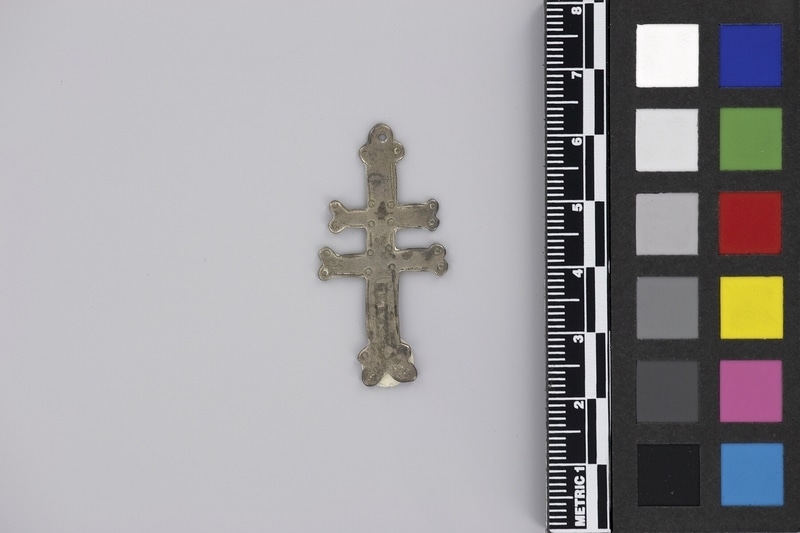Double Cross Item Number: 1590/66 from the MOA: University of British Columbia

Description
A Lorraine Cross with double rounded terminals on the bars and bottom. Cloverleaf terminal at the top. Holes punched top and bottom, and lines and circles engraved on the surface. Maker's mark is stamped in a cartouche.
History Of Use
Silver ornaments represent an important part of early exchange between Europeans, including fur traders, and first nations people, especially in Eastern and Central Canada and the USA. Initially, the main sources of silver were British, French, and Spanish coins. Most ornaments were produced by silversmiths of European origin in North America and Europe, and were actively traded only from 1760 to 1821. By the mid-18th century silver objects were produced in New England, Quebec and Montreal. Silver was used by first nations people as a sign of rank. Silver ornaments in these styles continue to be produced by native silversmiths in central Canada and the USA. The cross was the oldest form of trade silver, introduced by French missionaries to North America for presentation to converts. Crosses were later used as trade silver with no religious connotations. They circulated well into the 19th century, and were worn on the chest.
Cultural Context
trade; personal ornamentation; political alliance
Item History
- Made by Joseph Hall ? (Maker) in Canada ? or USA ? between 1760 and 1821
- Owned by Kathleen E. Reif before September 9, 1993
- Received from Kathleen E. Reif (Donor) on September 9, 1993
What
Who
- Culture
- Eastern Woodlands
- Creator
- Joseph Hall ? (Maker)
- Previous Owner
- Kathleen E. Reif
- Received from
- Kathleen E. Reif (Donor)
Where
- Holding Institution
- MOA: University of British Columbia
- Made in
- Canada ? or USA ?
When
- Creation Date
- between 1760 and 1821
- Ownership Date
- before September 9, 1993
- Acquisition Date
- on September 9, 1993
Other
- Item Classes
- metalwork
- Condition
- good
- Accession Number
- 1590/0066